Twelve students from UNC-Chapel Hill’s Institute for the Environment have spent the fall living and learning on the Outer Banks. During their semester at the Outer Banks Field Site (OBXFS) on ECU’s Outer Banks Campus, the students gained an understanding of the complex relationship between coastal policy, and the natural and social sciences that inform it, through classes, research, internships, and community involvement.
Leading the OBXFS and students are co-directors Dr. Andy Keeler and Dr. Lindsay Dubbs, as well as faculty member Dr. Linda D’Anna. These three faculty offer expertise in economics, public policy, social science, biogeochemical processes, and ecology. Dubbs is particularly proud of this group, stating, “The 2019 OBXFS class meshed well into a team and demonstrated that they would hold themselves to high standards early on. They had a strong work ethic, were open to direction and critique from faculty and one another, and took ownership of their research.” She was also impressed by their understanding of complex social situations, something that senior Connor Badgett noted as he reflected on his time here and the completion of the project. He thought working with a group for the Capstone would be extremely helpful for the future, and stated, “I had opinions about ideas that don’t reflect everyone’s opinions. And I think it’s good to see that, because [I’m] not always going to be right. It’s good to see different perspectives and work with other people to come to a consensus.”
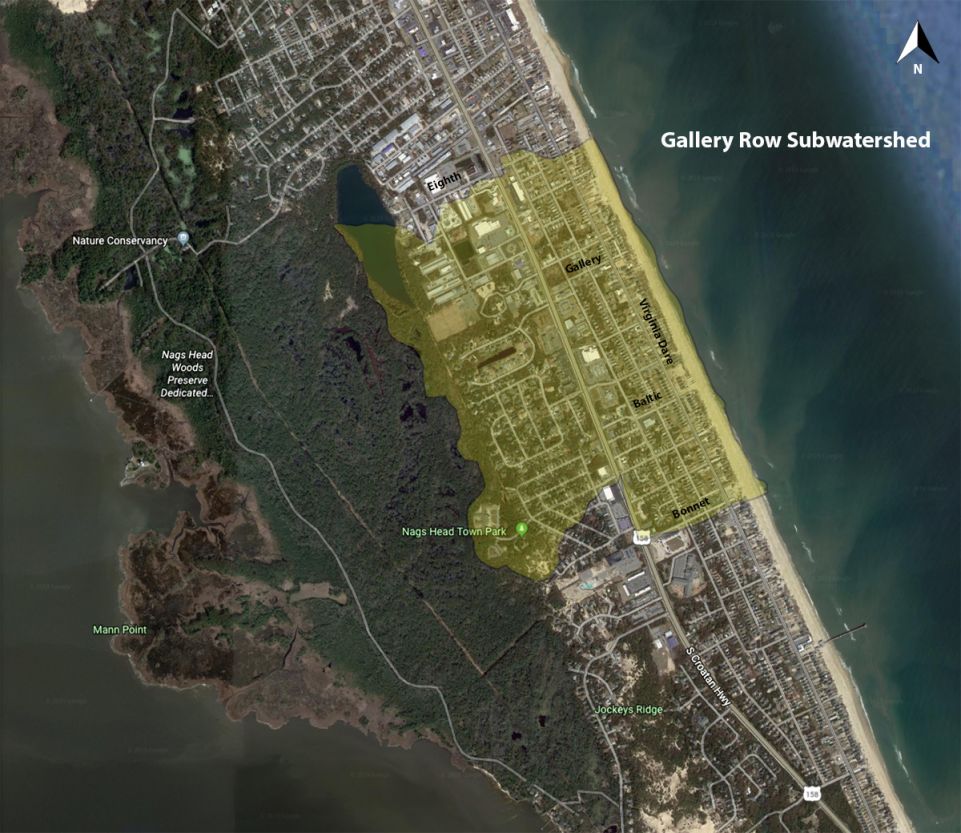
As part of their coursework, the students completed a group project called the Capstone. The Capstone is a team-based, semester-long research project undertaken by the students to better understand a pressing environmental issue while applying the skills they have learned throughout their academic experience. The 2019 OBXFS Capstone project is a continuation of the 2018 Capstone research undertaken by previous OBXFS students. During their project, the students worked closely with the Town of Nags Head to understand the nature of septic systems in a changing coastal landscape, and they collected data for the Gallery Row Subwatershed in Nags Head. The Gallery Row Subwatershed was identified as an area of interest because it is prone to flooding, which led Nags Head to lower the groundwater level at specific sites within the subwatershed this year.
Specifically, the students were tasked with answering three questions through their research. First, what areas of the Gallery Row Subwatershed are susceptible to interactions between under-treated septic wastewater and groundwater? Second, have nutrient, bacterial, and chemical wastewater indicator concentrations in surface and
groundwater reservoirs decreased since the lowering of the groundwater in the subwatershed? Finally, how do different groups and individuals perceive and understand the risk of surface and groundwater contamination from wastewater in Nags Head?
The students divided into groups to tackle these questions. They collected data on water levels and water quality at locations dispersed throughout Nags Head, including a control site in the Nags Head Woods Preserve. Over the course of the year, Nags Head has lowered its groundwater level at specific sites to reduce flooding, which may provide the ancillary benefit of reducing interactions between septic wastewater and groundwater, thereby improving water quality. Groundwater lowering happens when water is pumped from the site to a reservoir to lower the water table. This creates more space between groundwater and surface water which, in turn, allows for more dry soil through which septic water can be filtered and decontaminated as it seeps through the ground. The extra space provided by lowering also helps with flooding as it creates space for water from precipitation to drain from the surface into the soil. The water quality data collected for the 2018 and 2019 Capstone projects served as before and after snapshots that show what changes, if any, have occurred as a result of lowering the groundwater level. The students also conducted interviews with community members, researchers, septic professionals, and public officials to understand how they viewed the risks of contaminated surface and groundwater by wastewater.
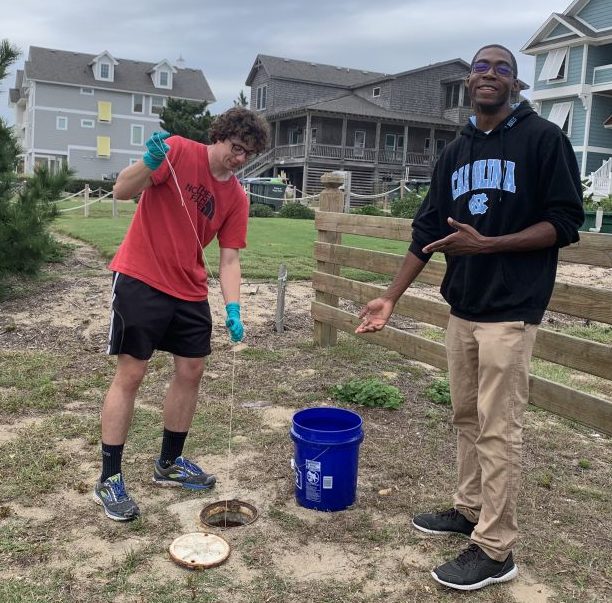
The students of the OBXFS used a variety of methods to answer each of the research questions. One group looked at the differences in height between the water table and ground elevation to gauge the susceptibility of groundwater to interacting with under-treated septic in different locations of Nags Head. A second group of students collected nutrient and bacteria data to explore trends from 2018 to 2019 and patterns across the subwatershed. Junior Emma Calhoun identified this work as an “important aspect to look at to see if Town initiatives are making a difference in mitigating environmental degradation.” Finally, a third group considered the “human dimensions” of the research for their Capstone project. According to senior Sarah Henshaw, this was an important aspect to consider as it helped them to “assess the knowledge that residents of Nags Head have, or do not have, about septic wastewater and groundwater interactions” and allowed them to “gauge the perception of risk, as well as identify the knowledge gaps that are present in the residents of Nags Head”. Senior CriShaun Hardy further explained, “While our main goal is not to present a specific course of action for the Town, data on perceptions across various groups can be useful for determining what the next step should be in terms of community action or policy decisions.”
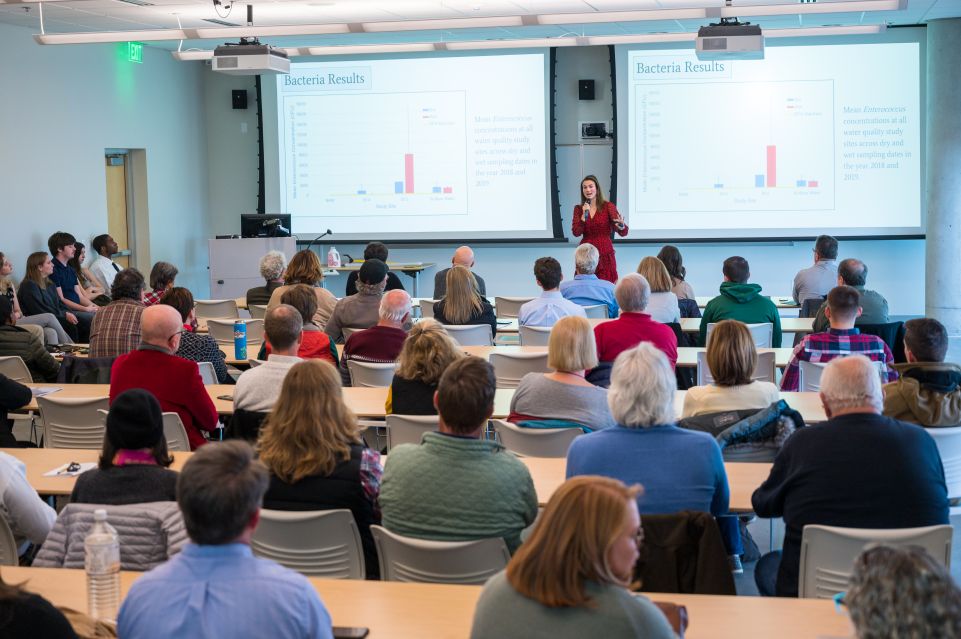
One of the over-arching goals of the Capstone research project was to teach the students about scientific methods through application and, in this instance, to do so through addressing relevant issues within the community in which they spent their semester. The students of the OBXFS presented their Capstone research project in a public presentation entitled “People, Water, and Septic: A Coastal Case Study” on December 12 at the Coastal Studies Institute. The program was recorded and can be viewed at the bottom of the page. The students also produced Flushed, a podcast on the project, including community interviews as well as information on topics such as coastal hydrology, septic system operations, and environmental changes. The podcast consists of three episodes, “Fecal Matters”, “Fluent in Effluent”, and “The Bottom Line” which were also released on December 12. Both the podcast and the project report are accessible via the OBXFS website and blog.
Though their study had a short time frame and a few other limitations, the students had some interesting findings. By using the water level data they collected and a mapping software tool, they found that about 50% of the Gallery Row Subwatershed between Rt. 12 and U.S. 158 had a high susceptibility to under-treated septic and groundwater interactions. Though it varied by season and amount of precipitation, most of the high-susceptibility areas were low-lying and near roads or businesses. The good news was that the reduced bacteria concentrations from 2018 to 2019 indicated that groundwater lowering in Nags Head may have improved the water quality. This means there was likely less under-treated septic and groundwater interactions in areas where the groundwater had been lowered. Finally, through interviews with four different groups of people who could either be affected by septic or could influence the policies related to septic- property owners, septic professionals, public officials, and researchers- the students found differences in risk perception between groups. The students discovered that the latter three groups had a higher risk perception of ground and surface water contamination from wastewater than property owners, who generally were more aware and cautious of how wastewater could affect their recreational activities. The students hope that through the podcast they wrote and produced, they will be able to highlight the perspectives of each group and raise the general public’s awareness of groundwater and surface water contamination. They believe it is through these measures that behaviors regarding septic habits, such as the care and maintenance of residential septic systems, could change for the better.
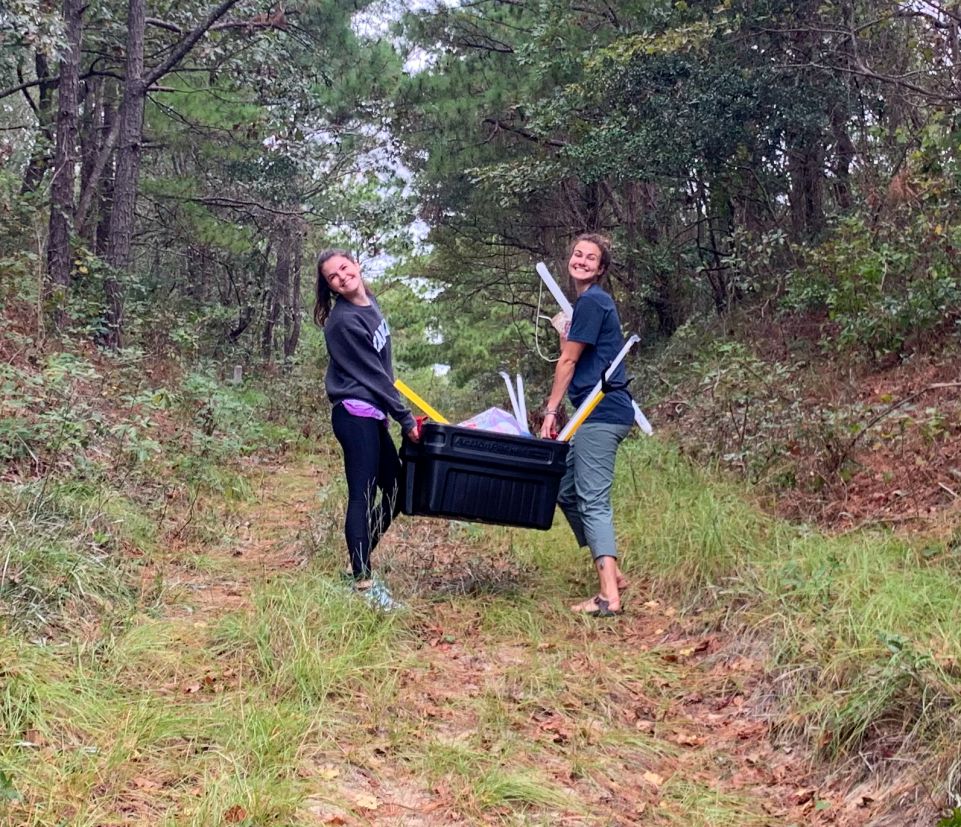
When asked to reflect on their semester as a whole, the students were very positive. Henshaw described herself as “lucky” because her Capstone research and internship with the planning department of Nags Head went hand-in-hand which allowed her to understand the issues as much as she felt possible. Hardy echoed these sentiments, stating that his internship with the Outer Banks Voice led him to a “greater understanding of the community and their point of view” which was to his advantage when analyzing the human dimensions of the Capstone data. Additionally, Hardy welcomed “learning actively” this semester at OBXFS and was glad to be part of such a neat experience. Calhoun noted her semester in Manteo was “the perfect solution” to a much-needed break from the hustle and bustle of Chapel Hill, and she was excited about the work she accomplished this semester, especially in her independent study with Dr. Andy Keeler and through her efforts toward the Capstone. Badgett was surprised to learn about the issues of septic systems, stating, “Septic isn’t something you hear about, especially on the mainland. People just flush their toilets and don’t think about it anymore. We learned how big of a deal it actually is, and it’s been cool to study it and see a lot of the coastal issues with it.” To which Calhoun added, “Who knew wastewater and septic tanks could be so fun?”

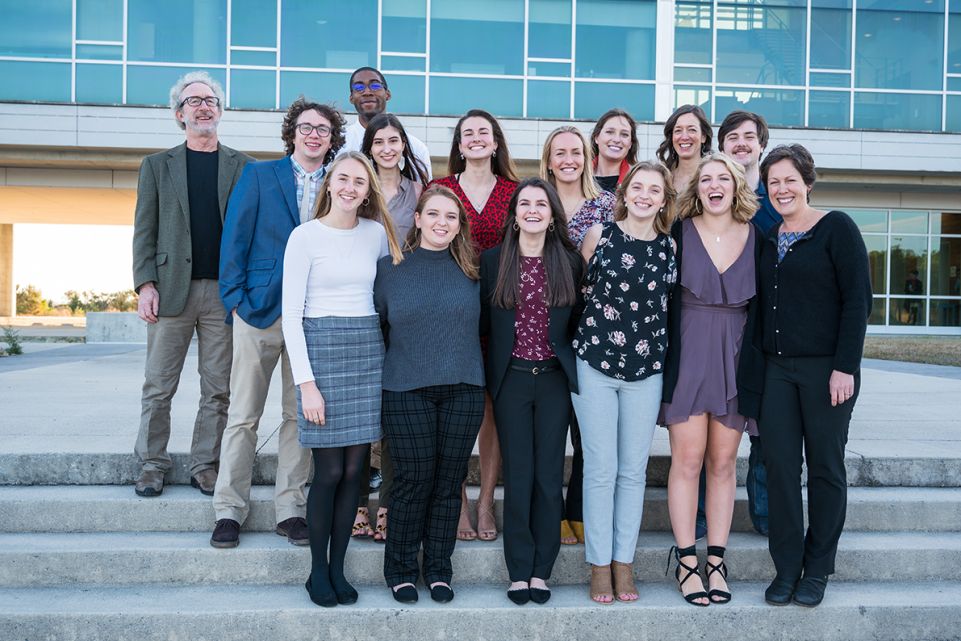

 Based at the Coastal Studies Institute (CSI), the North Carolina Renewable Ocean Energy Program (NCROEP) advances inter-disciplinary marine energy solutions across UNC System partner colleges of engineering at NC State University, UNC Charlotte, and NC A&T University. Click on the links below for more information.
Based at the Coastal Studies Institute (CSI), the North Carolina Renewable Ocean Energy Program (NCROEP) advances inter-disciplinary marine energy solutions across UNC System partner colleges of engineering at NC State University, UNC Charlotte, and NC A&T University. Click on the links below for more information. ECU's Integrated Coastal Programs (ECU ICP) is a leader in coastal and marine research, education, and engagement. ECU ICP includes the Coastal Studies Institute, ECU's Department of Coastal Studies, and ECU Diving and Water Safety.
ECU's Integrated Coastal Programs (ECU ICP) is a leader in coastal and marine research, education, and engagement. ECU ICP includes the Coastal Studies Institute, ECU's Department of Coastal Studies, and ECU Diving and Water Safety. The ECU Outer Banks campus is home to the Coastal Studies Institute.
The ECU Outer Banks campus is home to the Coastal Studies Institute.

